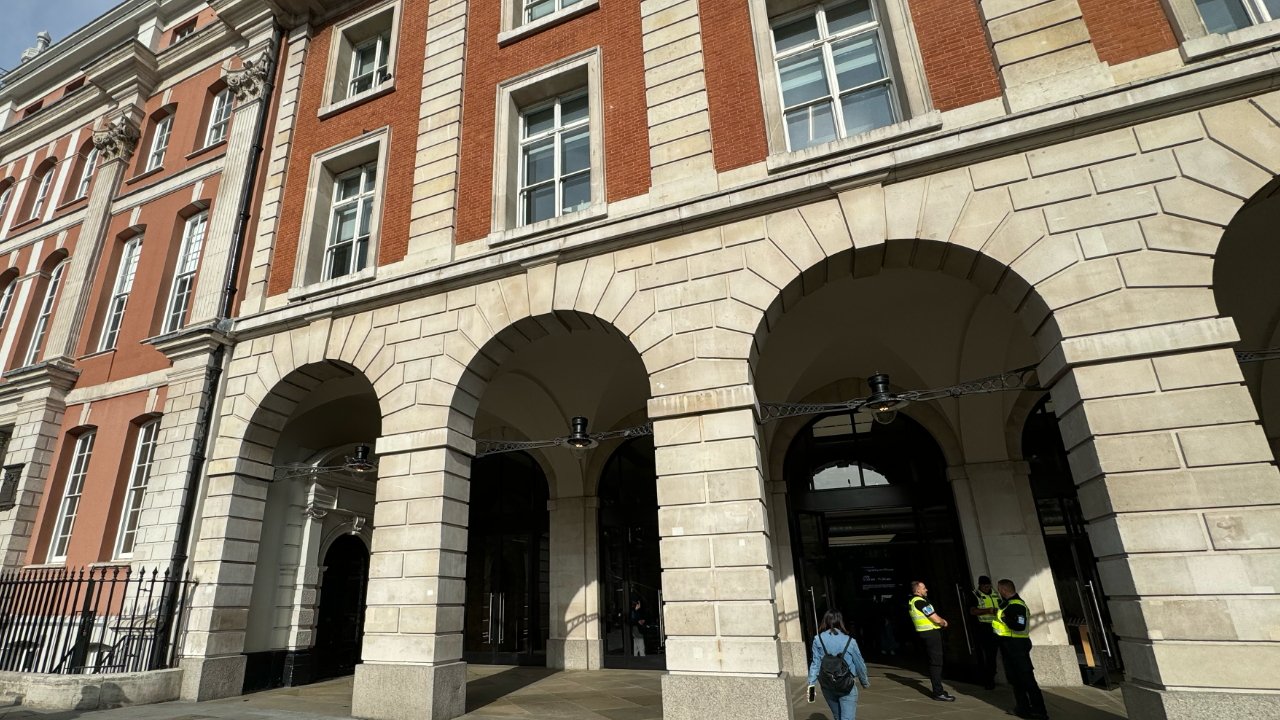Apple Covent Garden – huge, but so inconspicuous, good luck finding the Apple logo
The Apple retail store in Covent Garden, located in the heart of London, manages to be huge inside with a discreet, almost unobtrusive façade. visits the store.
Advertisement
London’s Covent Garden district lies to the east of the city’s West End theater district and is home to the Royal Opera House. The Apple store is located in a building built in 1876 in the center of what was historically a fruit and vegetable market.
Today, no such market can afford to be there, because the entire area is now an upscale shopping area dedicated mainly to the biggest brands. There are also a few lesser-known shops that have been in Covent Garden for decades, but despite their fame, the shops here are small.
Typically these are what would be called boutiques in the UK. It’s unusual and these small shops fit perfectly into the narrow streets, but they are small because the rent is very expensive.
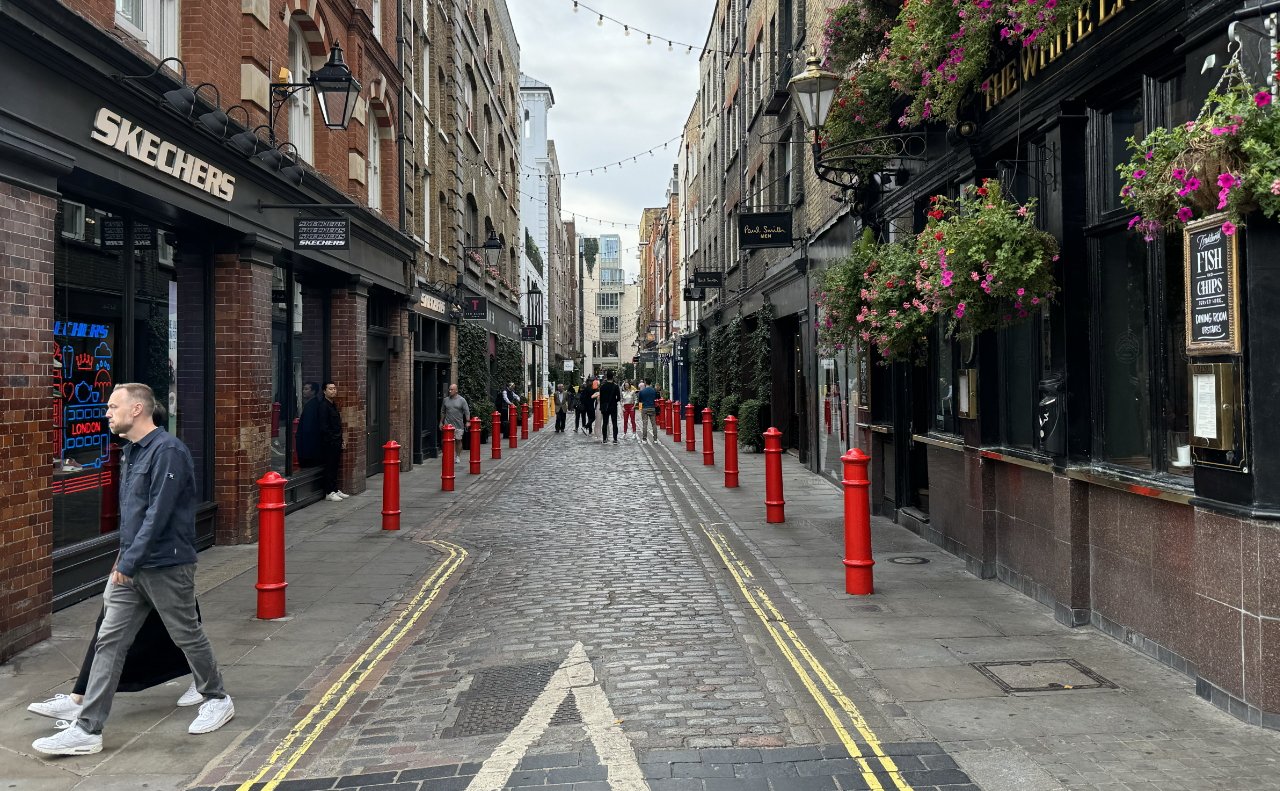
Advertisement
The streets around Covent Garden are narrow and most of the shops are small boutiques.
Apple Covent Garden looks exactly like this at first glance as you approach Covent Garden Square from the James Street entrance. It’s on a corner, and the Apple logo is so small that it’s easy to miss.
At the time of the visit, the iPhone 15 line had only been in stores for a few days, and there was a line outside—but not at the Apple Store. Instead, for some reason, there was a long line at the Swatch store further down James Street.
Turn onto King Street and you’ll arrive at No. 1, The Piazza, the official address of Apple Covent Garden, and you’ll immediately realize you’ve made a mistake. This is not a small corner store, it stretches down a small row with many windows and a couple of glass doors.
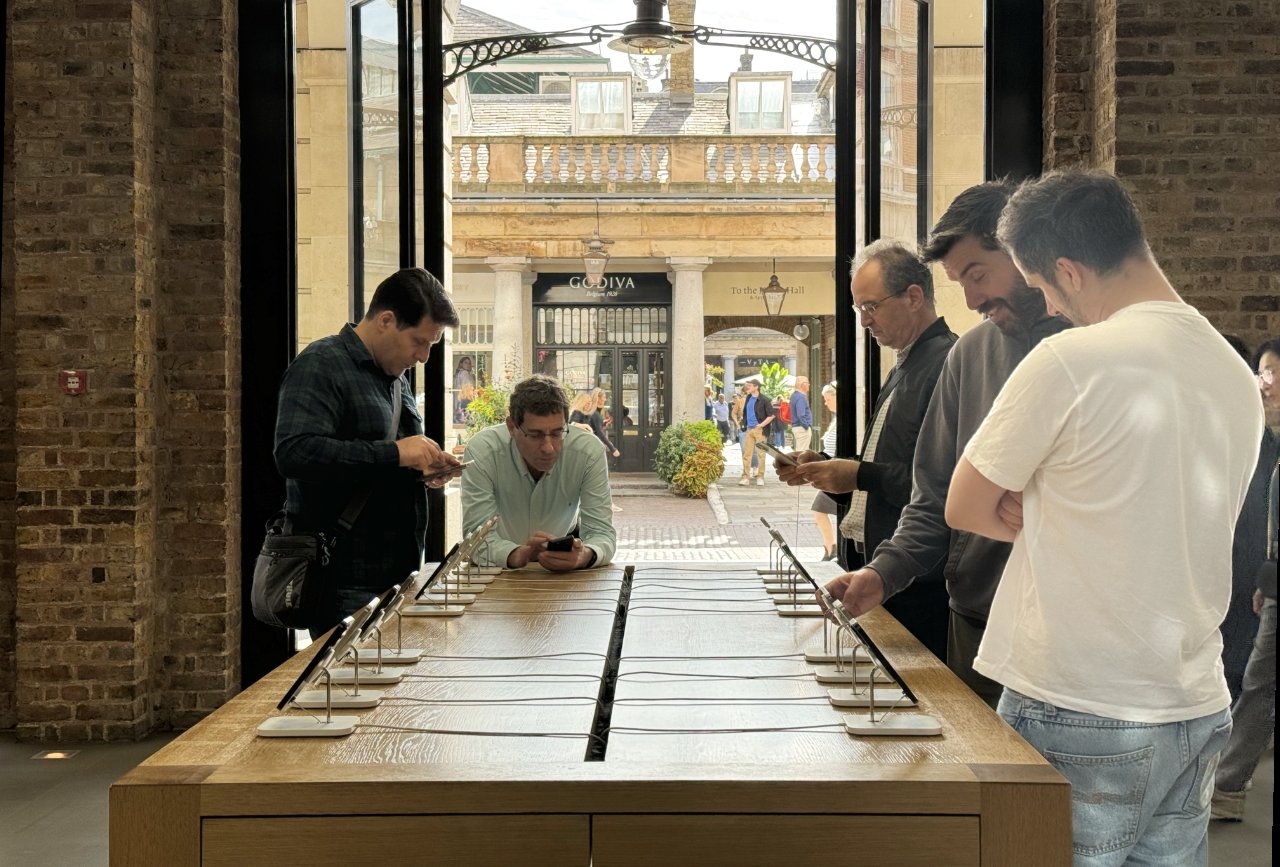
View of Covent Garden directly from the main entrance to the Apple Store.
Inside the store
Walk through one of these doors and you’ll again easily be mistaken about the size of the store. After all, what is in front of you, right outside the doors, is already one of the largest Apple Stores, but that’s not all.
Immediately in front of you is a typical Apple table with iPhones turned on. Then to the left there is a long corridor where there are even more iPhones on the tables.
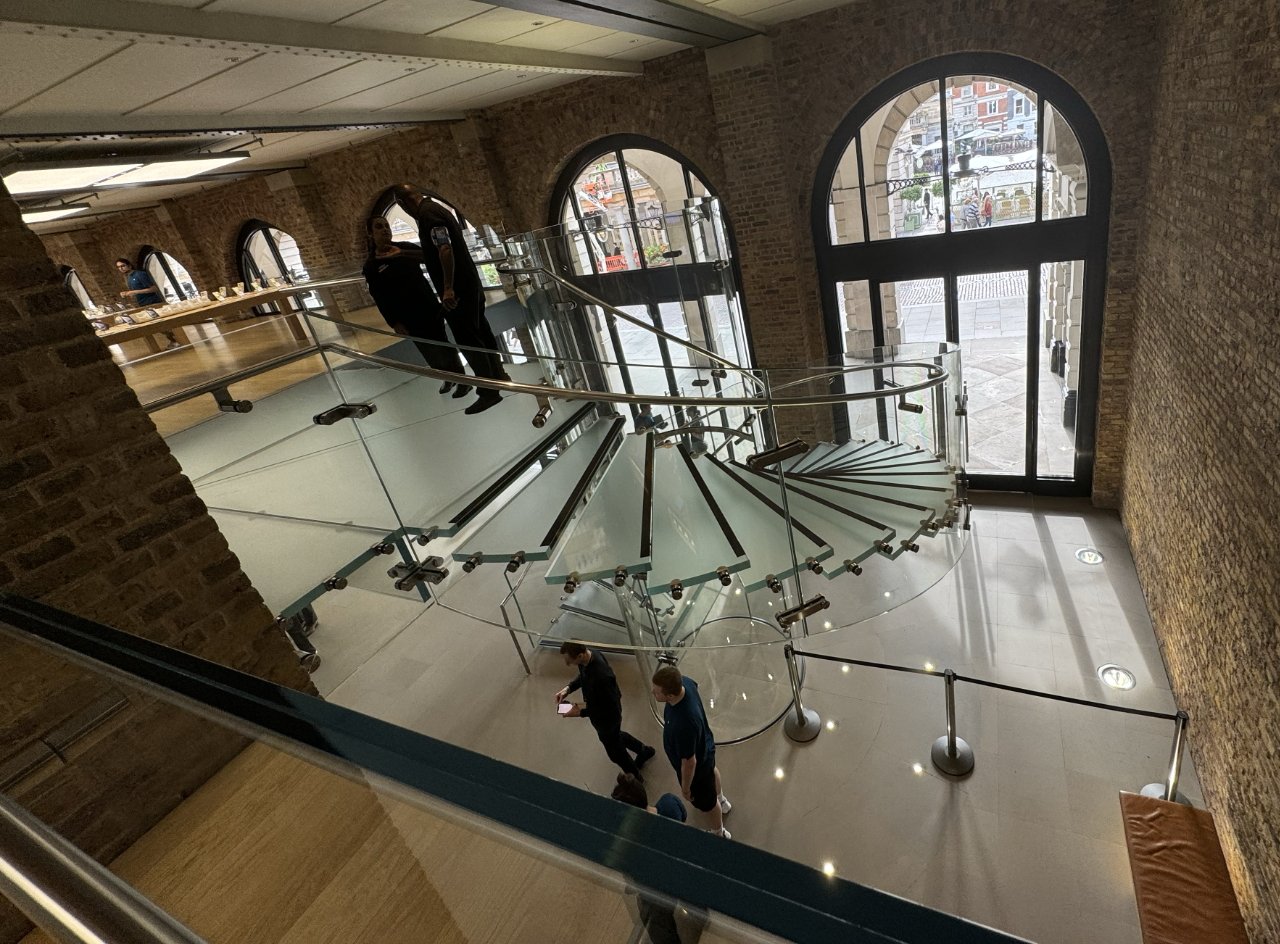
Looking down a circular glass staircase
To the right is a beautiful glass staircase. It’s too big and wide to be a traditional British spiral staircase, but it curves to take people to the next level.
But there’s something else on the ground floor. The entire structure is L-shaped, wrapped around an atrium. The atrium has a glass roof that allows you to see at least three floors up, and the space is dotted with a couple of trees and plenty of Apple box stools.
This atrium also houses a giant monitor that was used in the Today at Apple program.
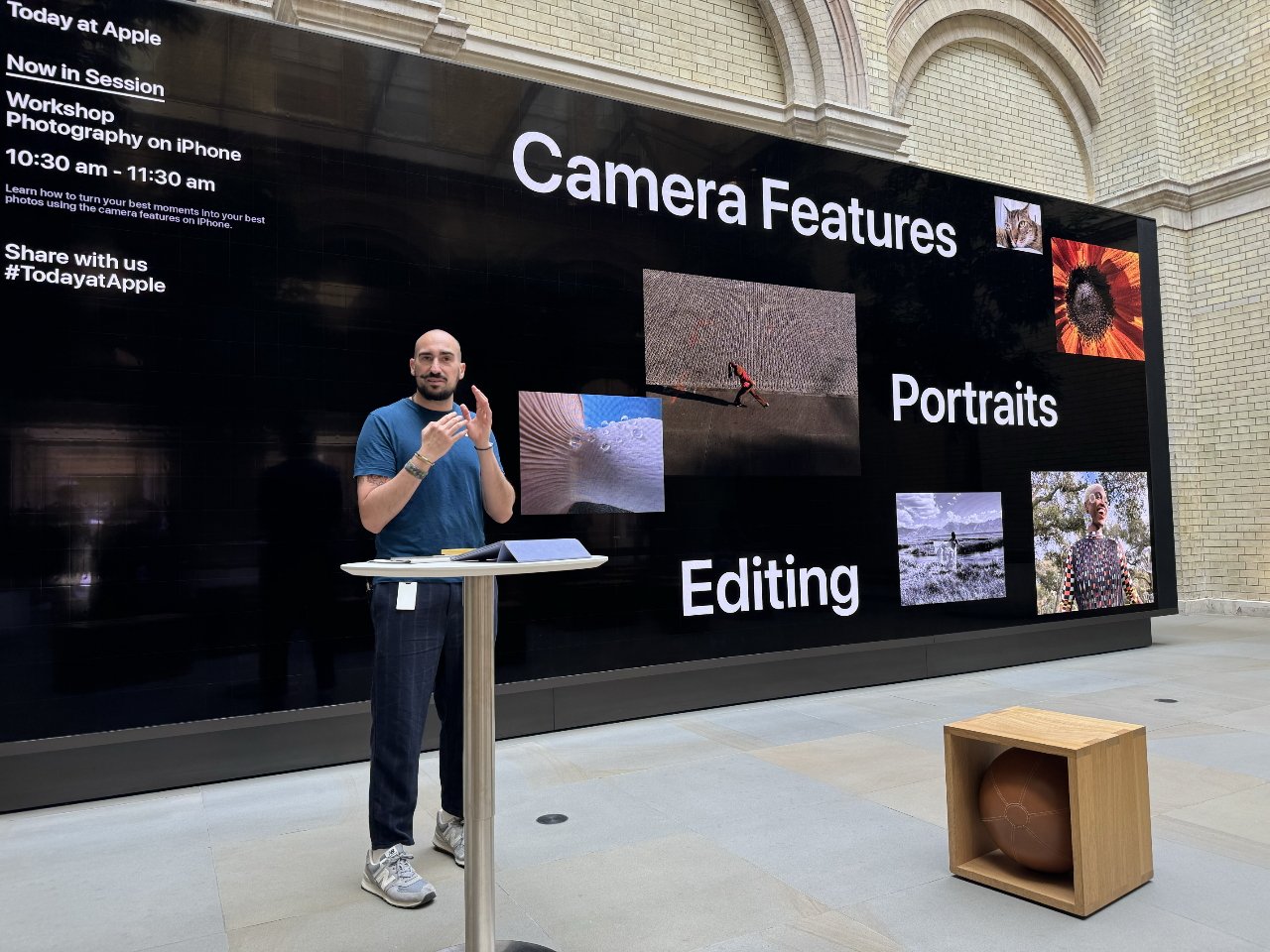
Sometimes during Today at Apple, this huge display would show what was on the presenter’s iPhone while he was demonstrating
took part in a Today at Apple session about great iPhone photography. One main presenter and two others hosted an hour where the audience ranged from four to about a dozen and the experiences of people with iPhones varied widely.
It was very impressive, and in typical Apple fashion, the presenter was happy to recommend third-party apps to people when they asked about it.
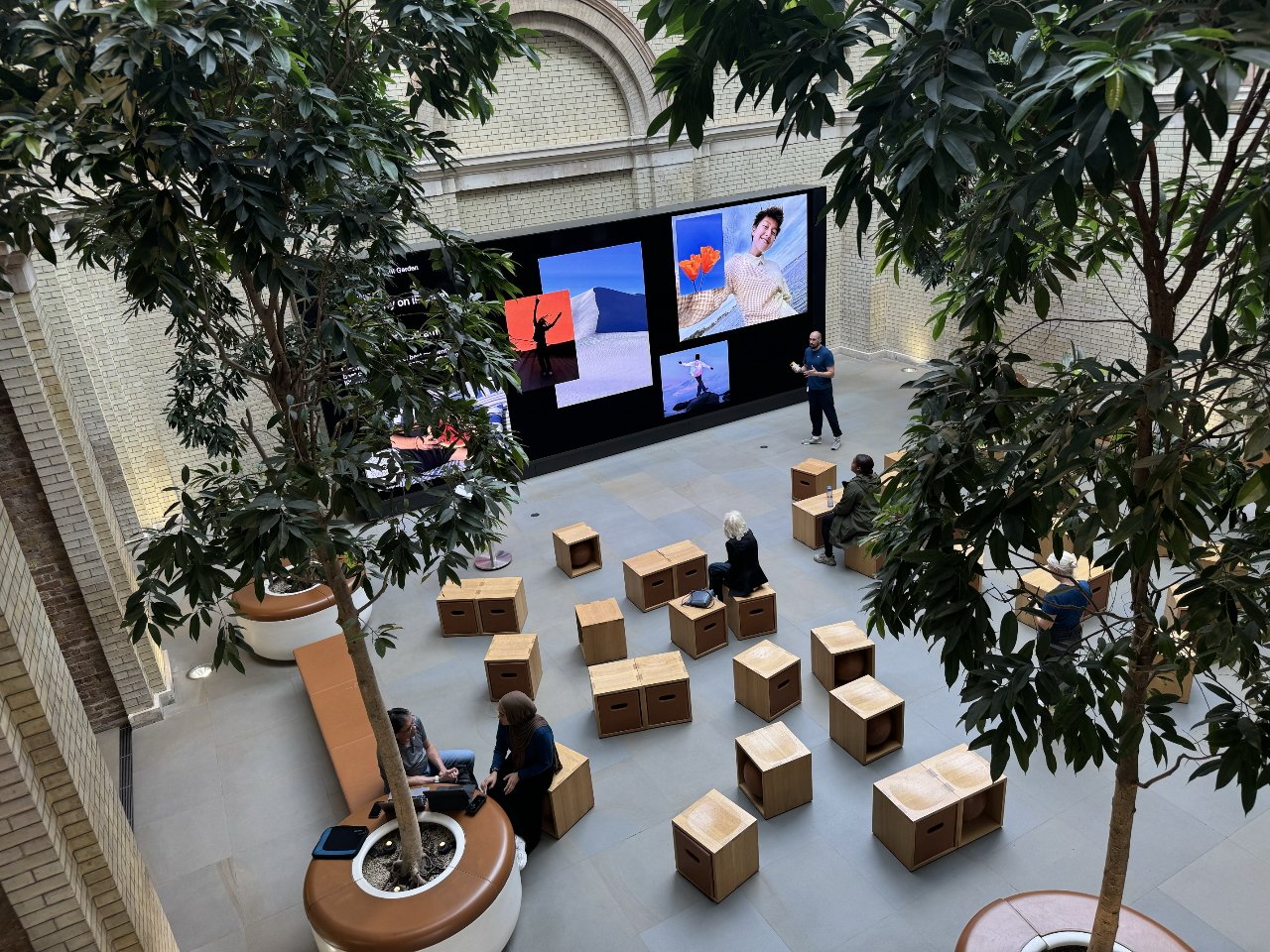
Today at Apple. During the hour-long session, the audience ranged from three or four to more than a dozen.
Get up
In addition to the circular glass staircase in the corner, there are several more glass steps at the back of the L-shaped room. Along the walls of this L-shaped space, shelves display Apple Music promotions and accessories, as well as Genius Bar-style tips.
Non-circular glass stairs look stylish and are clearly durable. They lead into a room that is smaller than the ground floor of the store, but still has room for many tables.
These ones are dedicated to the iPad, with sections for Apple Arcade and Apple Fitness+ along one wall. Basically there is only one main wall, because in place of the other there is a series of arches.
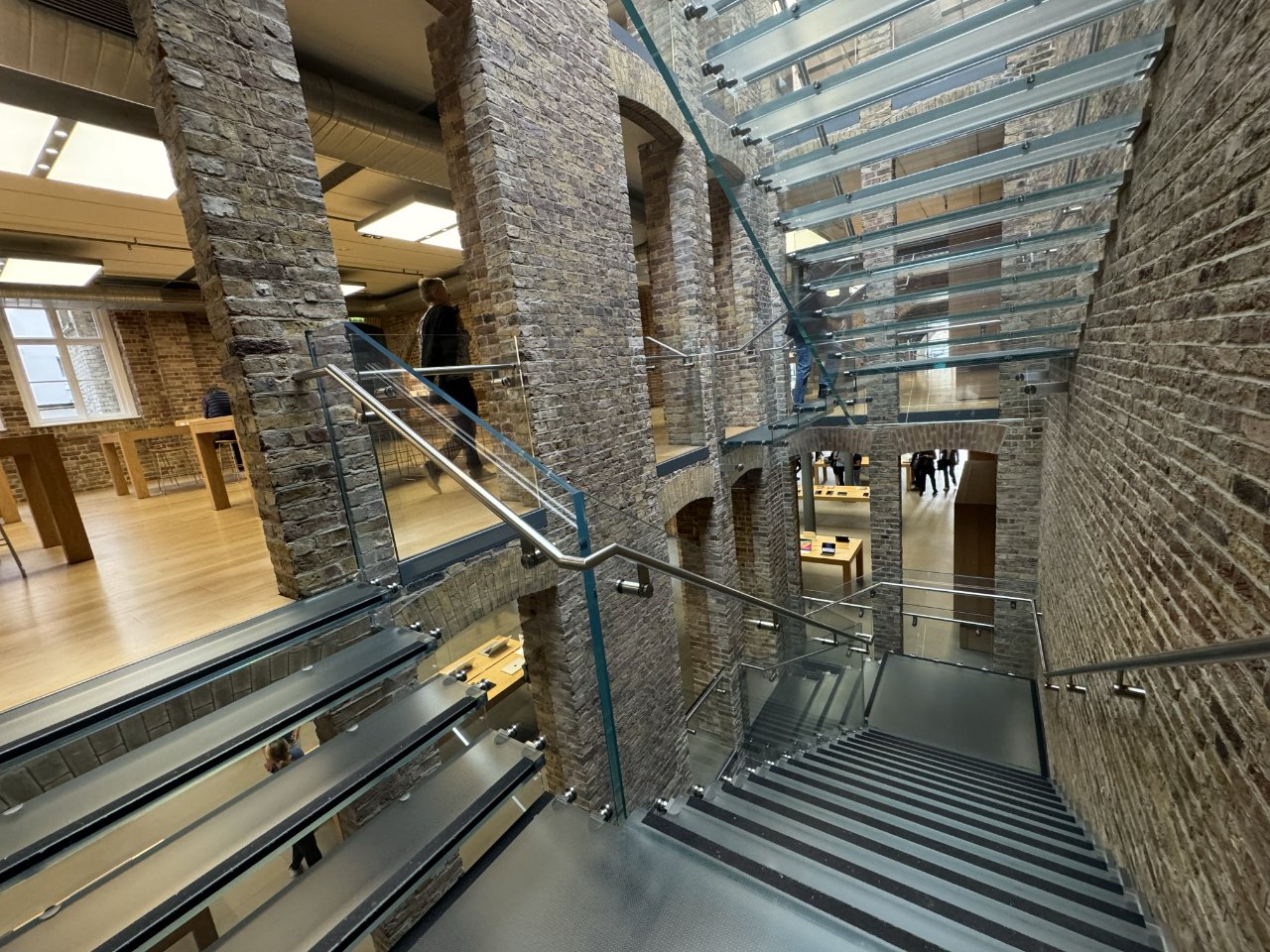
Apple doesn’t make this staircase as much of a centerpiece as the main circular glass staircase, but it is beautifully made.
The arches are original, dating from the 1870s. Apple restored the entire building’s brickwork. Although the site was last occupied by a nightclub when it was built, it was home to three separate businesses, including a hotel called Bedford Chambers.
According to the architectural website British History, a report from The Builder magazine in 1876 praised the construction. “[The building] will likely last another hundred years after the lease expires,” the report said.
Today, almost 150 years later, exposed brickwork forms the arches, with glass in between until about halfway up the railing.
Through the glass and the gap above it you can look down onto the atrium.
Even more
On the second floor there is one small section dedicated to AirTags and the usual Apple accessories. They feature a familiar Apple Store style display, but this display sits in the middle of a large brick wall and it’s important that it sits there.
These shelves are not attached to the wall and do not damage the brickwork. They seem to stand there to illuminate the space around them.
There are four large and very widely spaced Apple tables, and there are no products on them. However, there is a small TV monitor on the mobile stand, and Apple Covent Garden hosts more hands-on Today at Apple sessions in this space.
The second floor could accommodate a reasonably sized Apple Store, but there is one more.
The last floor is also dedicated to Apple training and support.
However, on the upper floors, nothing much seemed to be happening, and the round glass staircase was calling.
Going back down it offers a panoramic view of the atrium and the main parts of the store.
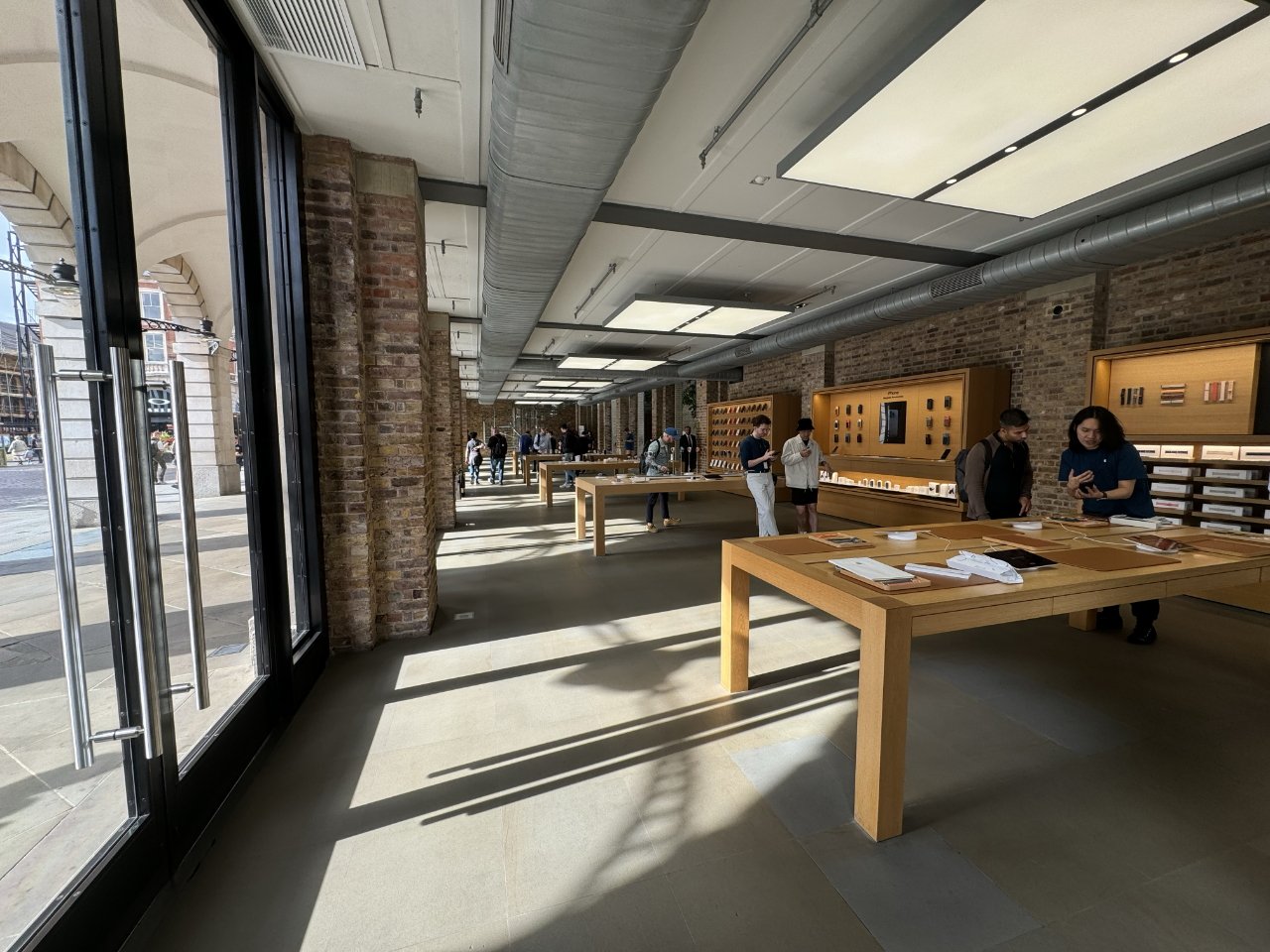
It was a quiet morning when I was there, but it felt like the store was big enough that it never felt crowded.
However, even so, the shape of Apple Covent Garden makes it difficult to estimate how many people there are.
In Britain there is an architectural tradition that is described as buildings having nooks, small unexpected corners and extra sections. It has always been used to describe fairly small buildings, but Apple Covent Garden is a huge building that seems to have the same feeling of nooks and crannies.
Apple tends to either build entirely new stores with striking architecture, such as Marina Bay Sands in Singapore, or go to extraordinary lengths to blend in with existing ones. Apple Covent Garden is similar to the UK’s Apple Birmingham: a 144-year-old building converted into a store, but retaining the original façade makes it deceptively small from the outside.
Apple Covent Garden is also a welcoming place. Even if no one knew why people lined up for Swatch.
